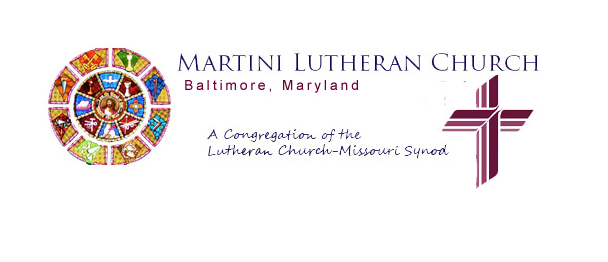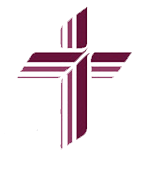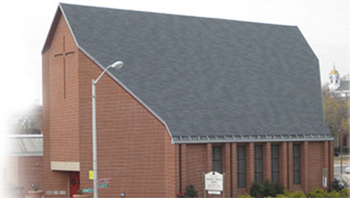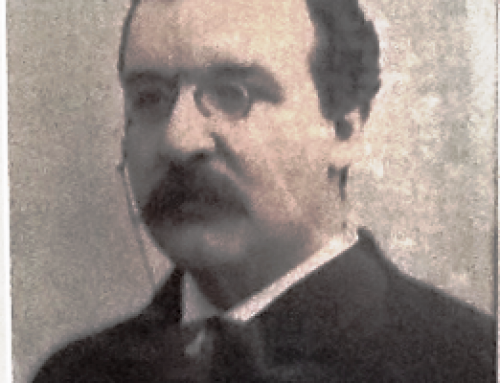Second German Evangelical Lutheran Church, the mother church for the first three Missouri Synod Churches in Baltimore, was organized on November 1,1835. More than 200 hundred people “subscribed themselves” to the new church under the leadership of Rev. Johann Peter Christian Haesbeart. According to minutes from the old church, Haesbeart had just lost his position as Pastor of Zion Church. As recorded on Zion’s web site, he was fired for being too argumentative with the church council which was running that church. He told Zion’s church council they were not following Lutheran doctrine. Many members of Zion left too. After the new congregation found Mechanics Hall on Gay and Market Streets too small a venue to hold services for the increasing numbers of visitors and often more than 200 people that attended regularly, it rented a church building and its contents on Holliday and Saratoga Streets. They eventually bought the building from the Irish Presbyterians who owned it for the price of $4,400. The church was served by three pastors, Rev. Johann Haesbeart (the founder), Rev. Freiderich Dietrich Wyneken (the organizer and stabilizer), and Ernst G. W. Keyl, (the preacher, teacher, and man of discipline).
The new church had a constitution (adopted with “great majority” on December 23, 1835), elected a church council, hired a cantor, and bought a cemetery. They soon built a school on the back of their church teaching German and religion. Although Haesbeart found Zion Church lacking in Lutheran doctrine, his new church’s congregation was a mixture of Lutherans, Reformed, and Rationalists. It took time and the pastorate of F. C. D. Wyneken to get things straighten out and to form Second German Evangelical Lutheran Church into a staunch Lutheran Congregation. When all was said and done, 80 people left the church to start a new Reformed Lutheran Church. The congregation gave them $1,000 to be used for this effort. On December 7, 1847, the mother church changed its name to Second German Evangelical Lutheran St. Paul’s Church and became a member of the Lutheran Church Missouri Synod having resigned from the Pennsylvania Synod.
The church was not a gothic German looking structure, as was true for her daughter churches, Immanuel Lutheran Church, St. Paul’s Lutheran Church, and Martini Lutheran Church. It was very boxy and looked somewhat like a warehouse. It had no altar, pulpit, candle sticks or crucifix. This was typical of Lutheran churches in those times. The congregation did build side galleries so there was more seating for the growing congregation. An organ was commissioned by the church from Mr. Hall when Wyneken was pastor. The same organ was later used by Martini Lutheran Church until 1886 when its present Hilborne Roosevelt tracker organ was purchased. By the time of Keyl’s pastorate there was an altar, pulpit, an oil painting of Dr. Luther, which was put behind the pulpit, candles, a crucifix, and altar cloths the color of the seasons.
The first cemetery was located on Robert Street near Madison Street close to the German Catholic cemetery. In December of 1853, the church started looking for a more suitable burial ground. It seems a road was being broken through the cemetery. The Mayor of Baltimore said that as long as the church had a charter for its cemetery, it could continue burying its dead in the two acres of ground. In 1854, negotiations were going on with the Hilbergs for purchasing their property for the new cemetery, which was located in what was to become Druid Hill Park. The cemetery had 200 family sized lots. Pastors, teachers, and their families were to be buried in a reserved space in the center of the cemetery. In 1855, a rule was made that only good Lutherans could be buried in the cemetery lots. After the mother church closed, the cemetery was equally owned by the three daughter congregations. Now the cemetery is the property of Martini Lutheran Church and is undergoing restoration.
It was the plan of Pastor Wyneken that schools be started in the three districts of the city from which the congregation mostly drew its members, so that the younger children could safely walk to class instead of making the long trip to Saratoga and Holliday Streets. Each of the neighborhood schools had their own Ladies Society, their own meetings, and their own building. There was a growing movement to build separate churches around the school buildings. Pastor Keyl was opposed to this. Dr. Walther, then President of the Missouri Synod, came to Baltimore and recommended to Old St. Paul’s Congregation that a new church should be erected in the northwestern district of the city, and to dismiss the members in the northeastern district to German Immanuel Lutheran Church, which had been organized in 1864, by members who withdrew from Old Trinity Church and which had secured a Missouri Synod pastor, Rev. C. Stuerken. On September 18, 1865, the congregation resolved to sell the old church building and select new building-sites. The building was in need of repair and the area around the church was changing with many factories and warehouses being built there. This movement in turn led to a division of the membership in the old congregation. It resulted in the incorporation of the new St. Paul’s Church April 3, 1866, and Martini Church incorporating on May 18, 1867. The members of the northeast district joined Immanuel Lutheran Church which dedicated its new building May 6, 1866. The new St. Paul’s called Rev. Hugo Hanser and dedicated its house of worship on December 15, 1867. Martini called Rev. Carl Frincke and dedicated its new church May 10, 1868. The three churches provided for Pastor Keyl until his death in Michigan in August 1872. The daughter churches were the outstanding outpost of Missourism in Baltimore, and provided many teachers and pastors educated at the Synod’s institutions.




